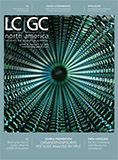Living the Virtual Life: Transitions in Teaching and Research
LCGC North America
After a few months of the coronavirus shutdown, the author has found some effective approaches to teaching and holding research meetings remotely.
My initial inclination was to write about something other than the current status of life, given the threats of coronavirus. However, after a month extension to the “shelter in place” was ordered by the United States government this past March, and after various e-discussions with friends and colleagues throughout the world who are experiencing similar challenges, I felt I might have something to offer to make life easier. I have just started using virtual meeting technologies for teaching and research meetings. As a novice with the use of various virtual platforms to deliver course content or conduct meetings, some of this might be obvious to many of you. However, if my little bit of experience can be of value to just a few, then it is probably worth sharing.
Before the whole coronavirus outbreak started, I had hardly familiarized myself with the two main virtual learning and communication systems that UT Arlington prefers-Microsoft Teams and Canvas. The reason for that is because I have found the preferences of the university to change a little too often. It seems like every couple of years, the university changes some platform. At first, I was gung ho to use any new platforms that the university desired. However, after many such changes, relearning and re-entering information into new profiles and management systems lost its luster. Then, during spring break, the announcement came that all classes would be moved online for the rest of the semester (now, it looks like this might be the case for UT Arlington for summer 2020, as well).
I have never been a huge proponent of online learning, especially as it relates to learning and teaching chemistry. While I believe that lecture course content can be delivered effectively online, there is an undeniable need for extensive hands-on laboratory experimentation in a physical science curriculum. Additionally, face-to-face lectures are likely more engaging for the students, but I have found that just with a few sessions under my belt, I can deliver class in a manner quite similar to that which I do in a classroom using Microsoft Teams.
I have had the honor of being a member of the University of Texas System Academy of Distinguished Teachers (ADT) since 2016. This collection of less than 40 of the top instructional faculty from across the UT System hold a wealth of knowledge about classroom and online instruction. As I was preparing to redesign my senior-level instrumental course for online delivery, I was heartened by an ADT blog from a colleague at UT El Paso (1). The main advice was to keep it simple and to try not to do too much. It is easy to become enamored (and overwhelmed) by the vast amount of technology and possibilities available for online instruction. The blog also emphasized keeping the channels open, and to not set the stakes too high. I found this all to be extremely valuable, and I thought of this advice often as I debated how to reorganize and deliver the course.
Ultimately, I decided that lecture course instruction would be done synchronously, using Microsoft Teams. I purchased a document camera. My regular lectures in the classroom primarily use the chalkboard, so that students are encouraged to write the material, as I do. Using the document camera and setting up a live event through Microsoft Teams allows me to convey the material in a very similar fashion. The live event is also recorded, in case anyone wants to watch it later, or again. The notes and other class materials can be scanned and uploaded in a repository in Teams (or in Canvas-I have preferred Teams, to this point). During lectures, students can ask questions verbally or through chat. Even after just a couple of lectures, I am heartened by how responsive the students are to using these different interfaces. They obviously have a lot more experience than I do. I actually seem to get more questions online than I did in person-although it is not clear whether that is because the material is harder to understand online, or if people feel more comfortable behind their computer screen. Regardless, it provides more opportunities to reiterate key points to the students. I recommend Microsoft Teams to anyone struggling with delivering synchronous course content. I have not yet embarked on creating any additional asynchronous lecture videos, but that would also be possible through Teams.
I hope everyone is staying safe and healthy, as well as practicing social distancing best practices. While I do not mind this extended time at home for now, it would be nice to get back into the lab and back on a regular schedule-and to visit again with friends, colleagues, and students, in person.
References
Kevin A. Schug is a Full Professor and the Shimadzu Distinguished Professor of Analytical Chemistry in the Department of Chemistry & Biochemistry at The University of Texas at Arlington. Direct correspondence to: kschug@uta.edu

New Study Reviews Chromatography Methods for Flavonoid Analysis
April 21st 2025Flavonoids are widely used metabolites that carry out various functions in different industries, such as food and cosmetics. Detecting, separating, and quantifying them in fruit species can be a complicated process.
Extracting Estrogenic Hormones Using Rotating Disk and Modified Clays
April 14th 2025University of Caldas and University of Chile researchers extracted estrogenic hormones from wastewater samples using rotating disk sorption extraction. After extraction, the concentrated analytes were measured using liquid chromatography coupled with photodiode array detection (HPLC-PDA).

.png&w=3840&q=75)

.png&w=3840&q=75)



.png&w=3840&q=75)



.png&w=3840&q=75)








